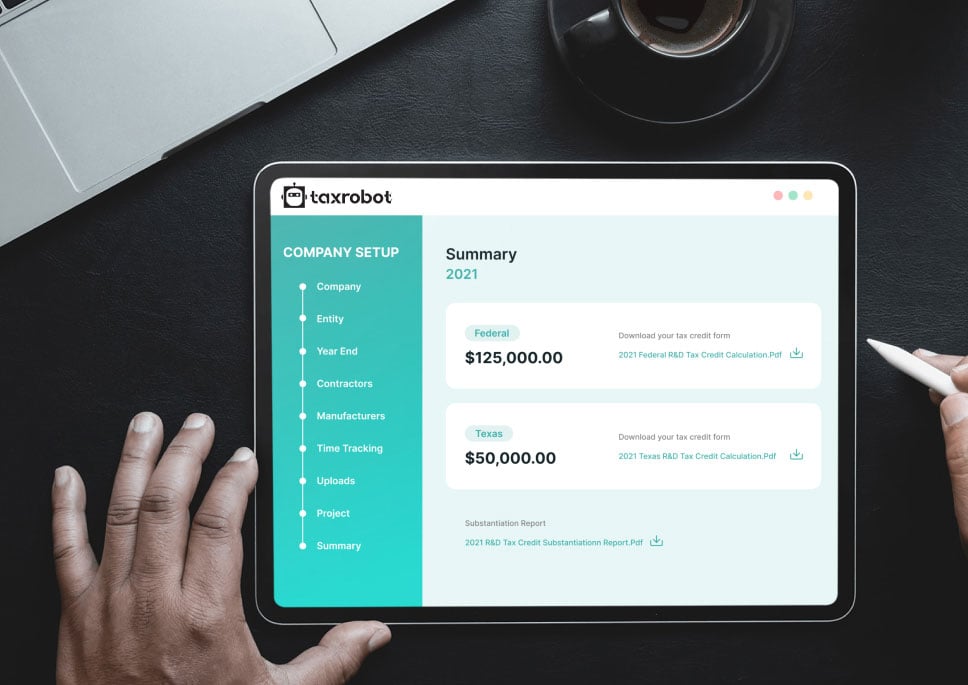Minnesota R&D Credit
Understand Minnesota’s R&D tax credit so you don’t leave money on the table.
Maximize your State Credits today!
Put the R&D tax credit process on autopilot.
Trusted By:








Minnesota R&D Credit
Discover your eligibility for Minnesota R&D tax credits and supercharge your enterprise.
Does Minnesota Offer R&D Tax Credits?
Yes, Minnesota does offer an R&D tax credit. By understanding this, companies can start saving on their taxes. Businesses can claim both the state’s Credit for Increasing Research Activities and the federal R&D tax credit.
Credit for Increasing Research Activities
The Minnesota R&D tax credit is often referred to by the state government as the “Credit for Increasing Research Activities.” The research behind the credit suggests that it was implemented to reduce the common phenomenon of under-investment in research and development, which would help local businesses. It is also designed to promote activities that increase the number of jobs in Minnesota and generally improve the state’s economic position.
When it comes to the credit, the amount it helps offset can be significant. It is equal to 10% of qualifying expenses that fall under $2 million. For qualifying expenses exceeding $2 million, it is equal to 4% of these expenses.
This credit itself is not refundable. However, it can be carried forward. Any amount that can’t be claimed in one year can be carried forward for up to 15 years after that point.
Federal R&D Tax Credit
Alongside the Minnesota R&D tax credit, the federal government also offers a credit.
Understanding this credit is an essential part of applying for the state credit. This is because Minnesota uses many of the same qualifications to determine whether an expense counts as a qualifying expense. Plus, applying for it alongside the state credit opens up even more opportunities for savings.
How to Qualify for the Minnesota R&D Credit
The Minnesota R&D tax credit has a few specific qualifications. Companies that don’t fit these qualifications cannot get the credit.
First, the company needs to be an S corporation, C-Corporation, LLC, or partnership. The company must also have qualifying R&D expenses that exceed its “base amount.” This base amount is determined by the federal R&D tax credit.
The expenses themselves also need to qualify. Qualified research expenses include expenses that would qualify for the federal R&D tax credit but are done within Minnesota.
Alongside this, some contributions to specific entities count toward the credit. Contributions to qualified nonprofit organizations that are involved in providing grants to businesses related to technology and innovation in Minnesota fall under this umbrella.
What Do You Need to File?
To file for the Minnesota R&D tax credit, a company needs to complete a specific form. This is the Schedule RD, Credit for Increasing Research Activities form on the Minnesota Revenue Department’s website. This form will help in determining the credit amount.
In some cases, the business entity will not be able to claim the credit and will have to pass it on to individuals. When individuals go about reporting this for tax purposes, they need to fill out the Schedule M1C, Other Nonrefundable Credits form. Then, they need to report the amount of the credit on Form M1 of their taxes.
All of this is due when the Minnesota tax return is due. In addition, holding on to sales and receipts relating to the credit for four years is necessary.
Make Sure You Claim the Credit Your Business Qualifies For
Claiming the Minnesota tax credit can be a little complicated. However, it can be a serious benefit for any business that qualifies for it. Following along with a tax credit guide or making use of professional software, like the software available from Tax Robot, can help any company get the advantage they should get from this credit. We’ll make sure you get the largest credit you are eligible for, plus help you navigate the documentation that comes along with it.
How Much Could You Save On Your Tax Bill?
Wondering how much your tax credit could total? Use our calculator and get an estimate today.
Take a sneak peak

- Limited Time Offer
- Simple Onboarding
- Easy to Use
R&D Tax Credits FAQs
The four-part test as outlined in the Internal Revenue Code is used to determine qualified R&D activity.
The Four-Part Test
1). New Or Improved Business Component
Creation of a new product, process, formula, invention, software, or technique; or improving the performance, functionality, quality, or reliability of existing business component.
- Construction of new buildings or renovation of existing buildings
- Invention of a software application
- Manufacturing of a new product or the improvement of the production process for an existing product
- Creation of design documentation
2). Technological In Nature
The activity fundamentally relies on principles of the physical or biological sciences, engineering, or computer science. A taxpayer does not need to obtain information that exceeds, expands or refines the common knowledge of skilled professionals in a particular field.
- Physics (relationship between mass, density and volume; loading as the
result of gravitational attraction) - Engineering (mechanical, electrical, civil, chemical)
- Computer science (theory of computation and design of computational systems)
3). Elimination Of Uncertainty
Uncertainty exists if the information available to the taxpayer does not establish the capability or method for developing or improving the business component, or the appropriate design of the business component.
- The capability of a manufacturer to create a part within the specified tolerances
- The appropriate method of overcoming unsuitable soil conditions during construction
- The appropriate software design to meet quality and volatility requirements
4). Process Of Experimentation
A process designed to evaluate one or more alternatives to achieve a result where the capability or method of achieving that result, or the appropriate design of that result, is uncertain as of the beginning of the taxpayer’s research activities.
- Systematic process of trial and error
- Evaluating alternative means and methods
- Computer modeling or simulation Prototyping Testing
The R&D tax credit is one of the most misunderstood tax incentives available. Considering the myriad of industries and activities that legally qualify for the credit, the term “research and development” is a misnomer. Additionally, the R&D tax credit requires specialized knowledge and technology to identify and calculate the incentive properly.
Companies of various industries are unaware that they are eligible to claim the R&D tax credit. Under the Internal Revenue Code’s definition of R&D, many common activities qualify. You can get tax benefits for industries including software, technology, architecture, engineering, construction, manufacturing, and more.
The R&D tax credit can be claimed for all open tax years. Generally, open tax years include the prior three tax years due to the statute of limitations period. In certain circumstances, the law allows businesses to claim the R&D tax credit for an extended period of time. It is common for companies to amend previous tax years to claim this benefit and reduce the maximum amount of tax liability.
Partnerships and S corporations must file this form to claim the credit. The credit will flow from the Form 6765, to the Schedule K-1, to the Form 3800 on the individual’s tax return. For individuals receiving this credit that have ownership interest in a partnership or S corporation, Form 6765 is not required on the individual return.
Individuals claiming this credit can report the credit directly on Form 3800, General Business Credit if their only source for the credit is a partnership, S corporation, estate, or trust. Otherwise, Form 6765 must be filed with the individual’s tax return (e.g. sole proprietorship).
For tax years prior to 2016, the credit can be used to reduce the taxpayer’s regular tax liability down to the tentative minimum tax. The credit cannot be used to offset alternative minimum tax. Beginning in tax year 2016, eligible small businesses have expanded utilization for the credit. For these eligible small businesses, the regular tax liability can offset alternative minimum tax using the “25/25” rule.
What our customers have to say
I highly recommend TaxRobot to anyone considering an R&D Tax Credit software to complete their analysis.

We decided to switch to TaxRobot… Best decision we’ve ever made. More affordable, and less complicated.

I couldn’t believe how easy it was! In under an hour, we saved enough money to hire a new employee.
